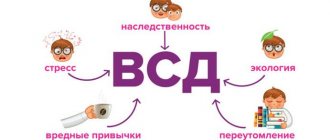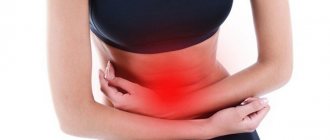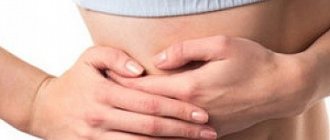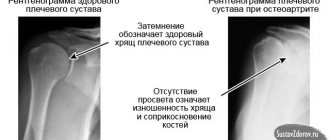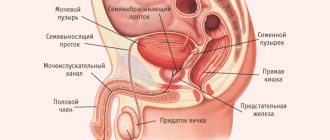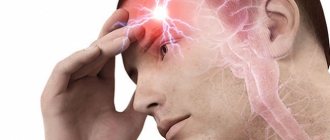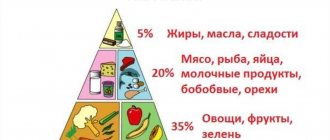Burning sensation in the lower abdomen in women with appendicitis
In fact, there are a huge number of reasons for the appearance of such discomfort. What does a burning sensation in the lower abdomen in women on the right indicate? The reasons may lie in inflammation of the appendix.
Of course, acute appendicitis is accompanied by other, more characteristic symptoms. One of the most striking is acute pain. It can be paroxysmal or constant, often spreading to the entire abdomen. Patients note nausea, loss of appetite, and dry mouth. There are about two dozen syndromes for diagnosing appendicitis. All of them give the right to assume the presence of this pathology, but an accurate diagnosis is made on the basis of ultrasound.
A patient with similar symptoms should be urgently taken to the hospital. A burning sensation in the lower right abdomen in women is a serious symptom. Appendicitis requires emergency surgery. The lack of qualified assistance is fraught with rupture of the appendix and a host of associated complications.
Pain with left-sided renal colic
Pain in the left side of the abdomen may occur during the passage of left-sided renal colic. It is characterized by severe pain caused by complete/partial occlusion of the lumen of the ureter.
A sign of colic is severe cramping pain that does not disappear when changing body position: a person constantly rushes around the room, trying to find a position that alleviates the painful syndrome. If pain develops in the left lower abdomen, and especially with the addition of pathological symptoms, the woman is advised to consult a doctor and undergo a full medical examination.
The occurrence of pain on the left side of the lower abdomen not only causes discomfort associated with a lot of unpleasant sensations, but is also a serious cause for concern, as it may indicate the development of any diseases.
Vital organs are located in this part of the peritoneum, so if pain appears, you should immediately find out the provoking factors in order to prevent serious health problems. From this article you will learn about the main causes of this symptom, as well as what should be done when it appears.
Unpleasant sensations with cystitis
Burning and pain in the lower abdomen in women is often caused by cystitis. This disease is associated with inflammation of the bladder and, according to statistics, is diagnosed more often in women than in men. This is due to the fact that the urethra in women is quite short and wide, which facilitates the movement of pathogenic organisms.
A burning sensation in the lower abdomen in women is not the only symptom of the disease. The clinical picture is characterized by a frequent urge to empty the bladder. Moreover, urination is accompanied by sharp, cutting pain. Some patients complain of itching in the urethra. Sometimes you can observe fever, weakness and body aches.
This kind of disease needs to be treated. If left untreated, the inflammatory process can spread to the ureters and kidneys. Against the background of chronic cystitis, there is a proliferation of connective tissues and their replacement of muscle fibers. The bladder wall loses its elasticity and ability to stretch. Thus, over time, the organ ceases to cope with its functions.
Gynecological pain
In the case when a woman experiences pain in the lower left part of the abdomen, first of all, there is a suspicion of the development of pathology of the uterine appendages. There are several factors by which one can suspect the presence of a gynecological disease:
- Menstrual irregularities;
- The occurrence of pathological vaginal discharge;
- The presence of acute or chronic inflammatory process in the uterine appendages;
- Unfavorable medical history.
The nature of pain in acute gynecological pathology
If a woman has pain in the lower left abdomen that develops suddenly and is characterized by the greatest degree of intensity, the patient requires immediate medical attention.
Symptoms of an acute abdomen can be provoked by ectopic pregnancy, acute inflammation of the appendages (adnexitis), hemorrhage into the ovary, torsion of the pedicle of an ovarian cyst. In such situations, the pain is cramping, cutting or stabbing in nature.
Pain caused by one or another gynecological problem radiates to the anus and to the area of the sacroiliac joint;
With the development of massive bleeding, due to a drop in blood pressure, pallor of the skin and mucous membranes, dizziness, general weakness and increased heart rate are noted;
When the fallopian tube ruptures, which is a consequence of tubal pregnancy, the so-called “dagger” pain occurs;
With an ovarian abscess or accumulation of pus in the fallopian tube, patients complain of sharp throbbing pain;
If a large amount of blood or pus enters the pelvic cavity, pain can radiate to the supra- and subclavian region, as well as to the left hypochondrium;
With the development of acute left-sided inflammation, along with pain in the lower abdomen, the patient’s body temperature rises and purulent vaginal discharge appears.
The nature of pain in chronic gynecological pathology
In the presence of a chronic inflammatory process in the left appendage, patients complain of dull nagging pain localized in the lower left part of the abdomen. Often, painful symptoms are accompanied by the presence of mucopurulent discharge.
Under the influence of provoking factors (hypothermia, a stressful situation or physical overexertion, weakened immunity, etc.), an exacerbation of the pathological process is possible, accompanied by the occurrence of purulent complications. In the absence of adequate treatment, irreversible changes in the left appendage of the uterus often develop, which can lead to infertility.
Shingles and its symptoms
A burning sensation in the lower abdomen in women in rare cases may be associated with the development of herpes zoster. This is a viral disease caused by the activation of certain types of herpes.
Viral particles penetrate nerve fibers and even with a short-term decrease in immunity begin to actively multiply. A characteristic herpetic rash forms on the skin along the affected nerve, which is a collection of blisters with liquid filling. The appearance of rashes is accompanied by severe itching, burning and pain.
Tingling in the uterus in the first trimester
Tingling in the uterus during early pregnancy is primarily associated with its growth, which begins intensively at about 5 weeks.
Main reasons
, causing tingling in the lower abdomen:
- Tension of the ligaments that support the uterus
. As the uterus grows, the ligaments are constantly stretched, which causes pain in the woman. In this case, tingling is often felt closer to the groin areas and intensifies with sudden movements (strong coughing, sneezing, sudden turns of the body, fast walking). When changing position, such sensations quickly stop; - Adaptation of the muscles of the anterior abdominal wall
. The abs gradually begin to lose their shape and adapt to the size of the growing uterus. Such discomfort also occurs more often with sudden movements and disappears fairly quickly.
Infections of the genitourinary system
A burning sensation in the lower abdomen can be a sign of various infectious diseases, including those that spread during sexual intercourse. Trichomoniasis, gonorrhea, chlamydia - all these pathologies are accompanied by discomfort, pain, itching and burning, but not only in the lower abdominal cavity, but also in the area of the external genitalia.
Other symptoms include the appearance of uncharacteristic vaginal discharge (sometimes purulent, with an unpleasant odor), a rash in the perineal area, painful urination, fever, etc.
Stomach pain in the middle left
The causes of such pain can be appendicitis and food intolerance.
Pain from appendicitis
Appendicitis can also manifest itself as acute pain in the lower left abdomen. Although anatomically it is located in the lower right part of the abdomen, at the initial stage of inflammation, pain appears in the middle of the abdomen, near the navel. Then it moves to the lower abdomen and can be felt in both the left and right parts of the abdominal cavity.
Sometimes vomiting and nausea occur, and the disease can be confused with intestinal flu.
If the condition worsens, accompanied by fever, then it is necessary to call an ambulance.
Abdominal pain on the left or in the middle after eating
Abdominal pain after eating in the middle abdomen may indicate food intolerance. Most often, pain occurs some time after eating.
Food intolerance manifests itself through a feeling of fullness or stabbing pain after eating. Diarrhea or flatulence often appears.
Typical intolerances include fructose intolerance, lactose intolerance or gluten intolerance. Gluten is a protein often found in baked goods or pasta.
Abdominal pain due to intestinal infections
With intestinal infections, in the first stages of the disease, pain may appear in the left side of the abdomen, since the narrower left side of the colon more quickly signals problems with pain. As the disease progresses, the pain spreads to the lower right side and then covers the entire abdominal cavity.
With an intestinal infection, fluid loss due to vomiting and diarrhea can be dangerous. Therefore, it is important to drink plenty of fluids.
Intestinal problems
When answering why there is a burning sensation in the lower abdomen, disorders of the digestive tract should be mentioned. Discomfort and burning can be associated with inflammatory processes, diverticulitis, colitis and other pathologies. Irritable bowel syndrome is also quite common - an ailment of a neurological nature (its symptoms develop against a background of stress).
It is always important to pay attention to other unpleasant sensations. In addition to burning, severe pain may be present. Patients experience digestive disorders, including bloating, frequent diarrhea, which is followed by constipation, and increased formation of intestinal gases.
The child asks to be born
A slight tingling sensation in the lower abdomen may also occur in the third trimester. Most often this is due to the body’s preparation for the upcoming birth. At approximately 35-36 weeks, the expectant mother may feel training contractions. They look like short, minor tingling sensations. They do not cause serious inconvenience, their duration is only a few minutes. Despite this, unlike the first and second trimesters, in the third you should take such manifestations of your body seriously. During this period, the fetus is already fully formed and may want to be born at any moment.
Particular attention should be paid to the situation if the tingling is sharper than usual, and there is a nagging, excruciating pain that lasts for a long time. Don't hesitate, you need to hurry to the maternity hospital. Most often, such signs mark the beginning of labor. Experienced gynecologists and obstetricians in the maternity hospital will monitor the woman’s condition.
So, in most cases, the lower abdomen of pregnant women tingles due to normal changes in the body associated with their interesting position. However, it is necessary to pay attention to the manifestation of other symptoms. So, for example, if tingling is accompanied by severe stomach upset, a significant increase in body temperature, fever, copious vaginal discharge (bloody or watery), severe pain in the lumbar region, then you should immediately call an ambulance.
Tingling sensations that increase in intensity and last for a long time (more than 1 hour) are also a reason to seek medical help as soon as possible. All of these symptoms indicate dangerous changes in a woman’s body and can provoke miscarriage, premature birth or other negative consequences.
Burning sensation in the lower abdomen in women: ectopic pregnancy
What else could such a symptom indicate? A burning sensation in the left lower abdomen in women can be caused by an ectopic pregnancy. Pain can appear not only on the left, but also on the right (on one side). This pathology occurs because the fertilized egg is implanted not in the uterus, but in the walls of the fallopian tube. The growth of the egg causes an increase in pressure on the surrounding structures, which is accompanied by a burning sensation and other very unpleasant sensations.
As the fetus develops, the woman experiences pain that is acute, sharp, and paroxysmal in nature. Sometimes they radiate to the lower back. In addition, there may be disturbances in urination and problems with bowel movements.
This is an emergency condition that requires immediate surgical intervention. The fact is that a developing ectopic pregnancy leads to rupture of the fallopian tube and massive internal bleeding.
Mistress
Dull, sharp, aching or stabbing pain on the left side in the lower abdomen usually worries and alarms a person.
Indeed, many vital organs are located in this area, and discomfort may indicate a variety of diseases and conditions, including potentially life-threatening ones that require immediate hospitalization. What are the most common causes of left-sided lower abdominal pain and what to do when they appear? This is worth looking into in more detail.
Abdominal pain in the lower left: possible causes
The abdominal cavity contains many vital human organs. In particular, on the left side there is the spleen, large and small intestines and organs of the genitourinary system. And in each of these organs a malfunction can occur - they become inflamed, injured, deformed, tumors develop on them, etc. Most diseases and conditions that cause left-sided pain in the lower abdomen require immediate treatment.
Spleen
The spleen produces and utilizes blood cells. Any pathology of this organ can cause left-sided pain in the lower abdomen. In particular, we are talking about diseases and conditions of the spleen such as:
Acute enlargement of the spleen - pathology can occur as a result of inflammation or impaired blood flow; in any case, the patient will be bothered by pain in the lower abdomen on the left, and symptoms such as nausea, vomiting, and increased body temperature may appear.
Splenic infarction - blockage of the artery and the formation of a necrotic focus surrounding the thrombus; sharp pain appears in the left hypochondrium and goes down, its intensity increases with movement, coughing and even deep breathing, the patient also has a high body temperature (about 39 degrees).
Volvulus of the spleen - sometimes (most often due to the congenital structural features of the human mesenteric ligaments or due to injury) the splenic artery is twisted, thereby causing gradually descending pain in the left side; the pain is accompanied by symptoms such as bloating, constipation, vomiting, and deterioration in general health.
Splenic abscess - large abscesses that are potentially life-threatening: when they open into the abdominal cavity, they cause diffuse pain, which may well be felt in the lower left abdomen. Lymphocytic leukemia and myeloid leukemia (chronic forms) - oncology of the hematopoietic organs begins painlessly, but as the tumor grows, the pain increases: first they appear after eating and upon palpation.
Intestines From the intestines, left-sided pain in the lower abdomen can occur for various reasons - from banal flatulence to much more serious conditions and diseases:
Malabsorption is the inability of the small intestinal mucosa to accept a certain product (or group of products), for example, fruit or milk; occurs with bursting pain in the lower abdomen on the left (explained by the accumulation of gases) and cramping pain in the same area (as a result of spasm of the vessels and muscles of the intestinal walls).
Crohn's disease - nodular inflammation of the gastrointestinal tract is manifested not only by left-sided pain in the lower abdomen, but also by vomiting, diarrhea, general fatigue, and loss of appetite.
Irritable bowel syndrome is accompanied by pain that can also bother the left lower abdomen, as well as flatulence, diarrhea or constipation. The disease is characterized by periods of remission and exacerbations.
Nonspecific ulcerative colitis occurs with morphological changes in the intestinal walls, accompanied by paroxysmal colic of varying intensity.
Polyposis - the appearance of benign formations (polyps) on the mucous membranes of some parts of the intestine can provoke left-sided pain in the lower abdomen.
Intestinal obstruction is accompanied by severe pain, as well as accumulation of gases in the intestines and constipation, nausea and vomiting, bloating and obvious asymmetry.
Intestinal volvulus is accompanied by severe paroxysmal pain, which completely recedes for a while, and then returns again, as well as vomiting.
There are a number of reasons that provoke pain in the lower left abdomen in women. These include the following ailments:
Inflammation of the fallopian tubes - in addition to sharp pain in the groin (including localization on the left side), patients suffer from vaginal discharge, painful periods and high fever.
Endometriosis - with this pathology, epithelial cells multiply outside the uterus, and they can also grow in the intestines.
Rupture and/or twisting of the ovarian stalk - this dangerous condition is manifested by pain of very high intensity and disturbances in the general condition of the patient: pallor of the skin, drop in pressure, increase in temperature, vomiting.
In this case, the patient needs emergency help.
Adnexitis and salpingoophoritis - inflammation of the appendages is accompanied by acute pain in the lower abdomen, which intensifies when palpated.
Ectopic pregnancy is a life-threatening condition for a woman, manifested by cramping pain, the intensity of which gradually increases; If the fallopian tube ruptures, the pain becomes unbearable, and the patient needs urgent medical attention.
Allen-Masters syndrome - occurs due to rupture of the uterine ligaments due to difficult or rapid labor, abortion, etc. Another of the many reasons that provoke left-sided pain in the lower abdomen in both men and women from the genitourinary system is the expansion of the renal pelvis.
Classification of pain : what it can be
Left-sided pain in the lower abdomen can have a different character, according to which one can suspect the development of a particular disease.
Dull pain usually accompanies unilateral “female” diseases. If dull pain is combined with fever, fatigue, and general weakness, then most likely we are talking about inflammatory pathologies.
A nagging left-sided pain is usually characteristic of purulent pathologies of the pelvic organs; it occurs with sprained ligaments in the groin and strangulated hernias, and also accompanies cancer (in this case, its intensity increases over time).
Sharp pain in the left lower abdomen can be caused by spasms, passage of uroliths through the urinary tract, rupture of the inguinal ligaments, inflammation, rupture of the ovary, dilatation of the renal pelvis or bladder.
Stitching pain can be a harbinger of ovarian rupture, a consequence of intestinal distension with gases, a companion to kidney disease or ulceration of the mucous membranes of the urethra or ureters.
In any case, the presence of such pain should be grounds for seeking help from a doctor.
At the same time, it is important to pay attention to the accompanying symptoms - elevated body temperature, diarrhea, vomiting, pallor, lethargy, etc. You must report them to a specialist - this information will be useful for making an accurate diagnosis. What to do about pain in the left lower abdomen?
Left-sided pain in the lower abdomen cannot be ignored. They may indicate a developing acute pathology requiring emergency medical care. Therefore, taking painkillers to relieve pain is not an option in this case. The cause will not go away, and dull sensations can complicate the diagnosis.
- If you feel pain of any intensity and any nature in the left lower abdomen, you must act as follows:
- Ensure yourself peace and take the most comfortable position in which pain is not felt or, at least, does not intensify.
- Assess pain from the perspective of existing chronic diseases, the state of the body as a whole and other symptoms present (pregnancy, diarrhea, vomiting, high fever, etc.).
- In case of initial pain (if the person has never experienced such sensations in the lower left abdomen before), it is recommended to call an ambulance.
- If the pain has already manifested itself before, the patient can make a decision on the advisability of seeking emergency medical help independently - call an ambulance if the condition clearly worsens, call a local doctor at home if the condition is stable, or go to the clinic for a referral for examination in case of a short-term attack .
- It is important to remember that even if the intensity of pain in the left lower abdomen is not high, this sensation may indicate the development of a serious disease.
Treatment of pain in the lower abdomen on the left
Of course, the treatment itself is not aimed at relieving pain, but at eliminating its cause. Very often, patients suffering from left-sided pain in the lower abdomen require emergency medical care and hospitalization. Treatment can be either conservative (using various drugs) or surgical.
Most often, doctors of the following specialties treat patients with left-sided pain in the lower abdomen:
gynecologist; surgeon; traumatologist; gastroenterologist; infectious disease specialist
As a rule, making an accurate diagnosis requires examination and questioning of the patient, laboratory tests of blood and urine, tests of liver and pancreatic enzymes, as well as radiographic, ultrasound and endoscopic examinations. Based on the results of the examination, an individual treatment plan is developed for each patient.
Category: Health
Discomfort during pregnancy
Many expectant mothers complain of not very pleasant sensations, nagging pain and a burning sensation in the lower abdomen. Should you worry about this?
As the fetus grows, the size of the uterus increases, which puts pressure on surrounding organs, tissues, blood vessels and nerve endings. This is accompanied by the appearance of not very pleasant sensations, including burning. However, this is a completely normal physiological process.
But if we are talking about severe pain and discomfort, then you need to consult a doctor without delay. This is especially true in situations where bloody vaginal discharge appears against the background of deteriorating health.
The presence of such deterioration may indicate an increase in uterine tone. In the first and second trimester, hypertonicity can lead to miscarriage, and in the last months of pregnancy - to premature birth.
This is why it is so important to inform your obstetrician-gynecologist about any deterioration in your health.
Diagnosis of stomach disease
The pain may be aching, stabbing or cutting. It is an important symptom that the patient must be able to understand and explain to the doctor. You need to determine the place where the pain point is located.
Pain below the ribs, in the upper abdomen, pain below the navel - the doctor can make a preliminary diagnosis for the patient at the examination stage. Damage to the inlet of the stomach, liver, esophagus, cholecystitis, cholelithiasis, intestines - there are many causes of pain, so it is important to help the doctor correctly diagnose the disease.
It is better not to self-medicate and not to take medications that can create the appearance of improvement and mask the disease. Contact a clinic or call an ambulance, because home treatment is not only useless, but also life-threatening.
Sometimes the pain does not originate in the stomach, but gives the false impression of pain in the abdomen. You need to undergo a full examination to find out the cause of the disease.
If you know your diagnosis and the pain has not arisen for the first time, you can take antispasmodics before the doctor arrives - no-shpa, papaverine or other medications prescribed for your treatment.
During pregnancy, as a result of physiological changes necessary for its normal course and the development of the child, a woman at this time can experience a lot of new sensations, and, unfortunately, not always pleasant ones. One of these signs of a global restructuring of the body is a tingling sensation in the uterus during pregnancy, which is felt by almost all expectant mothers at one time or another.
information
In most cases, these sensations are caused by physiological reasons, i.e. are associated with the very fact of pregnancy and do not pose any threat to the mother and her child.
However, it should be remembered that some changes can still be a sign of various diseases, so any new sensations should be treated with some caution and promptly report them to your obstetrician-gynecologist.
Other Possible Causes
The above diseases can cause a burning sensation in the lower abdomen. But there are other pathologies that lead to similar disorders.
These include the formation of tumors or polyps in the urethra. Urine passing through the urinary canals irritates the tissues of such structures, which causes severe burning and itching.
Sometimes unpleasant sensations are associated with the formation of adhesions between the walls of organs, which leads to disruption of the outflow of blood and other fluids.
Sometimes the appearance of burning and discomfort in the lower abdomen is associated with the characteristics of the menstrual cycle. Many women complain of discomfort a few days before or already during menstruation. The appearance of burning and nagging pain in the middle of the cycle may indicate ovulation.
Groin pain in an elderly woman, causes
The main cause of groin pain in older women is the physiological restructuring of the body at a certain age - menopause.
For each, it occurs at a different age and is accompanied by hormonal changes, which, in addition to sweating, dizziness, and nervous instability, are characterized by pain in the genitourinary system. This feeling is very strong during the so-called hot flashes.
Menopause is the main cause of groin pain in older women
What to do if symptoms appear
In modern medicine, the phenomenon of burning in the lower abdomen in women is often recorded. We have considered the reasons. What should the patient do in this case? Discomfort can indicate a variety of pathologies, so you cannot self-medicate or ignore existing disorders.
You should definitely consult a doctor, since it is impossible to determine the cause of pain, burning and itching without special diagnostics. The specialist will prescribe blood and urine tests, hardware examinations of the gastrointestinal tract, pelvic organs, and conduct a gynecological examination.
Factors causing stomach disease
Why stabbing pain in the stomach occurs should be determined by a specialist.
The patient's condition is influenced by a number of factors:
- binge eating;
- constipation;
- injuries;
- allergy;
- infections;
- physical fatigue;
- poisoning
Stomach infections often cause diarrhea, vomiting, and nausea. With allergies, pain occurs after taking an allergen product, which causes an allergic reaction.
It is better not to self-medicate, but to see a doctor for diagnosis and treatment.
Return to contents
What not to do
If you are concerned about severe burning and pain in the lower abdomen, you should not immediately take antispasmodic medications and analgesics, as these drugs can hide the features of the clinical picture, which will complicate the diagnostic process.
It is also not recommended to apply heat to the abdomen, as discomfort may be caused by infection. Warming the affected area will dilate the blood vessels, which will speed up the spread of pathogenic microorganisms.
It is especially dangerous to use a heating pad if you have appendicitis. Heat can speed up the process of appendix perforation.
Do not rinse the intestines or take laxatives without the advice of a doctor. If pain and discomfort are caused by intestinal obstruction, then such manipulations can only worsen the situation.
Classification of pain
Pain can not only be of a certain nature, but have many different characteristics. It is important to classify them in order to more clearly describe the symptom.
Table. Classification of stabbing pains.
| Type | Description |
| In most cases, occurrence means serious problems. You cannot ignore and limit yourself to taking painkillers; it is necessary to determine the cause . This could be kidney problems, infection, pancreas, cystitis, prostatitis or intestinal pathology, even obstruction. |
Acute | If the stabbing is sharp and irritating, and the sensations tend to intensify, an attack of appendicitis is possible. It may also be an inflammatory process in the genitourinary system . Problems with the gastrointestinal tract are also likely in this situation, especially with the parallel occurrence of shock and fainting. If chills accompany colic, the problem may be in the pelvic organs. |
Growing | It often develops due to problems in the intestines, mainly in the thick part. Accompanied by intestinal bloating . If the intestines have nothing to do with it, you need to pay attention to the genitourinary system . It may also be a left-sided cyst that needs to be removed surgically. If there is accompanying fever, vomiting and other severe symptoms, you should call an ambulance. |
| When women experience stabbing pain in the lower left in the form of contractions, it is most likely associated with gynecology (or pregnancy, including ectopic). In men, this can be almost any disease, from the gastrointestinal tract to the prostate. A urinary tract infection or intestinal colitis is likely. |
Pulsating | If colic pulsates, it is most likely an intestinal problem, or inflammation of the appendages in women. Intestinal colitis or obstruction is likely . It could also be inflammation or swelling in the intestines. |
Periodic | If the pain is not one-time, but returns periodically, this also indicates intestinal problems or pathologies of the genitourinary system. |
| If you experience constant pain, there is a high probability of a serious chronic pathology that needs to be diagnosed as soon as possible. There is a syndrome of chronic pelvic diseases, a complex pathology that cannot be cured completely. It may also be a tumor in the pelvis, intestines or reproductive organ. |
Cause of pain by location
The length of the human intestine is measured in meters, and every part of it can become inflamed.
Different symptoms appear in the same area of the abdomen, and they are provoked by different causes. This is not surprising - the intestines are compactly “packed” in the peritoneum, and all areas are adjacent to each other. Thus, frequent pain at the navel is provoked by intestinal colic, helminths or developed enteritis.
Factors causing pain symptoms in the lower left quadrant
An unpleasant sensation can occur anywhere - in the upper left part of the peritoneum or lower.
In the latter case, symptoms are provoked by the following factors:
- inflammation (Crohn's disease, colitis);
- food irritation;
- diarrhea caused by worms or amoebas;
- poisoning
Sometimes a nagging pain occurs in the intestines that is not associated with the digestive tract. The cause may be a compressed nerve, the end of which is located in the area of the intestinal tract. A stone moving towards the bladder will also cause severe pain.
What causes pain in the right lower abdomen?
This case has its own symptoms and causes of pain localized in this quadrant. They are both pathological and non-pathological in nature. Diet disorders and overeating, poisoning and gas formation can have an effect.
Diagnostic procedures and treatment
How is a disease diagnosed, the symptom of which is stabbing pain in the left lower abdomen? In almost all cases, a full examination is necessary, which begins with collecting anamnesis and clarifying the nature of the symptoms.
- The patient is interviewed by the doctor, and here it is very important to accurately describe your feelings, select the most appropriate epithets, determine the strength of colic, their frequency, name the accompanying symptoms and, if possible, provoking factors.
- Tests are required, in particular, standard urine and blood sampling, but if you suspect intestinal problems, you will need a stool test, if you suspect gynecology, a smear, and so on.
A stool test may be required - An ultrasound will almost certainly be prescribed, which will exclude (or identify) pathological tumor formations.
- Additional studies will follow until the cause of the pain is identified. This may include radiography, tomography, colonoscopy and other procedures.
Colonoscopy of the intestine
How to treat
Since the range of diseases that cause colic in the lower left abdominal segment is too large, treatment will be prescribed in accordance with the identified cause.
- If the cause is in the intestines, the diet will change and drug therapy will be prescribed.
- If you have appendicitis, it will be removed surgically.
- If the cause is a cyst, surgical intervention to remove it is also necessary (in the case where the cyst is not physiological).
- Cystitis is treated with medication.
Drug treatment of cystitis - If prostatitis is detected, the doctor prescribes drug therapy.
- If the patient is pregnant, a thorough examination is carried out to eliminate possible problems.
- Kidneys and pancreas are also treated with medication.
- If a malignant tumor is present, treatment will be consistent with accepted cancer therapy.
Methods for diagnosing pancreatic diseases
Which method of relieving colic will be chosen depends on what disease caused the attack.
Prevention
Is it possible to take preventative measures to help prevent colic? This also largely depends on what their cause is. For example, if you have problems with your pancreas, you should not overuse fatty and spicy foods. If you have irritable bowels, you need to follow a diet. Genitourinary and many gynecological problems are largely prevented by maintaining intimate hygiene.
Intimate hygiene rules for women
In some cases, colic is caused by an infection caused by viruses that have entered the body either due to insufficient hygiene or due to reduced immunity. Maintaining a healthy lifestyle in general and regular preventive examinations will help prevent or relieve stabbing pain by identifying the pathology that causes it at an early stage. What can hurt on the left under the ribs can be found in our article.
What causes pain symptoms in the tract
| Type | Factors |
| Acute pain | Infections in the gastrointestinal tract, appendix, ulcerative colitis of a nonspecific nature |
| Cutting long lasting | The same ulcerative colitis, as well as intestinal irritation |
| Aching dull type | Chronic inflammation of the tract, intestinal obstruction or volvulus, pancreatitis and neoplasms |
| Feelings like contractions | Ingestion of parasites (helminths), poisoning, mechanical damage |
| Continuous cutting | Colitis, irritation |
| Pressure-expanding | The effects of hot food or excessive consumption of pickles, as well as gastritis |
Judging by the information given in the table, it is clear that ulcerative colitis can manifest itself with various pain symptoms. Therefore, the doctor will need other signs to make a more specific diagnosis.

